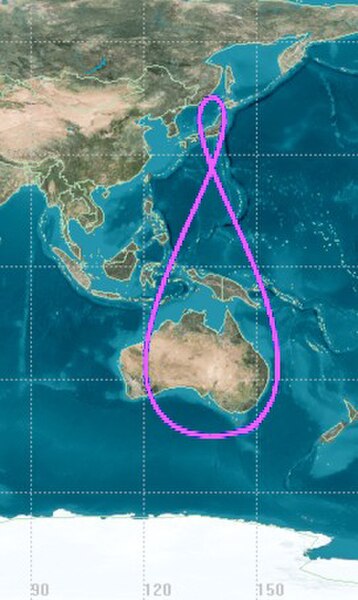Syncom started as a 1961 NASA program for active geosynchronous communication satellites, all of which were developed and manufactured by the Space and Communications division of Hughes Aircraft Company. Syncom 2, launched in 1963, was the world's first geosynchronous communications satellite. Syncom 3, launched in 1964, was the world's first geostationary satellite.
First generation Syncom satellite
Syncom IV, Hughes-owned US military Leasat
A geosynchronous orbit is an Earth-centered orbit with an orbital period that matches Earth's rotation on its axis, 23 hours, 56 minutes, and 4 seconds. The synchronization of rotation and orbital period means that, for an observer on Earth's surface, an object in geosynchronous orbit returns to exactly the same position in the sky after a period of one sidereal day. Over the course of a day, the object's position in the sky may remain still or trace out a path, typically in a figure-8 form, whose precise characteristics depend on the orbit's inclination and eccentricity. A circular geosynchronous orbit has a constant altitude of 35,786 km (22,236 mi).
The geosynchronous orbit was popularised by the science fiction author Arthur C. Clarke, and is thus sometimes called the Clarke Orbit.
Syncom 2: The first functional geosynchronous satellite
A quasi-zenith satellite orbit
A computer-generated image of space debris. Two debris fields are shown: around geosynchronous space and low Earth orbit.





